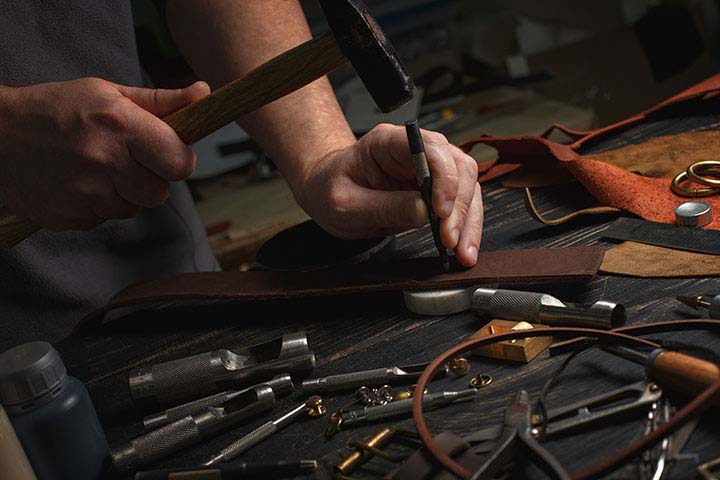
10 Feb Why Rely on Centuries-Old Techniques for Modern Leatherwork?
In an era dominated by rapid technological advancements and mass production, the art of traditional leatherworking stands as a testament to the enduring value of craftsmanship. This introductory post to our “Timeless Craft: Revolutionizing Leatherwork with Tradition” series delves into the compelling reasons behind the continued reliance on age-old leatherworking techniques in the creation of modern, high-quality leather goods.
The Essence of Traditional Leatherworking Techniques
Leatherworking is an ancient craft, with techniques such as hand-stitching, tooling, dyeing, and burnishing passed down through generations. Developed out of necessity, these methods have been refined over centuries, embodying a rich heritage of craftsmanship. Each technique brings a unique quality to leather goods, from the robustness of hand-stitched seams to the intricate beauty of tooled designs.
Durability and Quality
One of the most significant advantages of traditional leatherworking is the unparalleled durability and quality it imparts to leather goods. Unlike mass-produced items, handcrafted leather products are made with meticulous attention to detail and a deep understanding of the material’s properties. This commitment to excellence ensures that each piece is not only beautiful but built to last.
The Artisan’s Touch
The hand of the artisan imbues leather goods with a unique character and soul that machine production simply cannot replicate. This artisanal touch results in one-of-a-kind pieces that carry the maker’s signature, offering consumers something truly special and personal.
Sustainability and Ethical Practices
Traditional leatherworking aligns with contemporary values of sustainability and ethical production. Utilizing natural materials, minimizing waste, and relying on skilled human labor, these practices offer a responsible alternative to the often environmentally damaging and impersonal methods of mass production.
Adapting to Modern Needs
While deeply rooted in history, traditional leatherworking techniques are not static. Artisans today are innovating within the framework of their craft, adapting techniques to satisfy modern consumers’ desires for customization, innovative design, and the incorporation of new, sustainable materials.
The Role of High-Quality Tools
The choice of tools is critical in traditional leatherworking. High-quality, traditionally crafted tools, like those offered by C. S. Osborne & Co, play a pivotal role in achieving the desired outcomes. These tools bridge the gap between ancient craftsmanship and modern functionality, enabling artisans to maintain the integrity of their work in today’s context.
Education and Skill Transmission
The survival of traditional leatherworking techniques hinges on the transmission of knowledge and skills to new generations. Workshops, apprenticeships, and online tutorials play a crucial role in this process, ensuring that the rich legacy of leather craftsmanship continues to thrive.
Conclusion
Traditional leatherworking techniques bring history, artistry, and unparalleled quality to modern leather goods. In a world that increasingly values authenticity and sustainability, these time-honored methods offer a meaningful connection to the past and a promising path forward for the craft.
Embrace the legacy of traditional craftsmanship with Osborne Leather Tools. Whether you’re a seasoned artisan or a novice eager to explore the rich world of leatherwork, our range of high-quality, traditional tools is designed to meet your needs. Discover how you can incorporate these techniques and tools into your work by visiting our product pages, accessing educational resources, or signing up for workshops. Join us in keeping the timeless craft of leatherwork alive and thriving.


